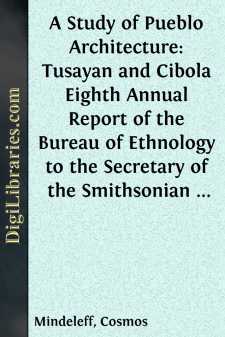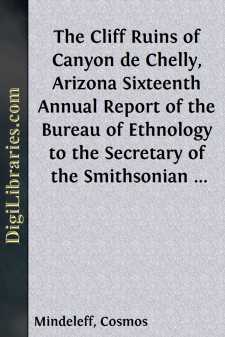Categories
- Antiques & Collectibles 13
- Architecture 36
- Art 48
- Bibles 22
- Biography & Autobiography 813
- Body, Mind & Spirit 142
- Business & Economics 28
- Children's Books 17
- Children's Fiction 14
- Computers 4
- Cooking 94
- Crafts & Hobbies 4
- Drama 346
- Education 46
- Family & Relationships 57
- Fiction 11829
- Games 19
- Gardening 17
- Health & Fitness 34
- History 1377
- House & Home 1
- Humor 147
- Juvenile Fiction 1873
- Juvenile Nonfiction 202
- Language Arts & Disciplines 88
- Law 16
- Literary Collections 686
- Literary Criticism 179
- Mathematics 13
- Medical 41
- Music 40
- Nature 179
- Non-Classifiable 1768
- Performing Arts 7
- Periodicals 1453
- Philosophy 64
- Photography 2
- Poetry 896
- Political Science 203
- Psychology 42
- Reference 154
- Religion 513
- Science 126
- Self-Help 84
- Social Science 81
- Sports & Recreation 34
- Study Aids 3
- Technology & Engineering 59
- Transportation 23
- Travel 463
- True Crime 29
Navaho Houses, pages 469-518 Seventeenth Annual Report of the Bureau of Ethnology to the Secretary of the Smithsonian Institution, 1895-1896, Government Printing Office, Washington, 1898
by: Cosmos Mindeleff
Categories:
Description:
Excerpt
INTRODUCTION
The account of the houses or hogáns of the Navaho Indians which is presented here will be of interest to the student of architecture, it is believed, because data concerning such primitive types of house structures are quite rare. It is also thought to be of interest to the archeologist and ethnologist as well as to the general reader, for it is well known that no one product of a people’s art exhibits so clearly their mental attitude and their industrial status as the houses which they build.
Much of the material here presented was obtained some ten years ago, when the recent changes which have taken place in Navaho life had only just begun. Although the same processes are now employed in house construction as formerly, and although the same ceremonies are observed, they are not so universally nor so strictly adhered to as they were. The present tendency is such that in a comparatively short time the rules for the construction of a hogán which have been handed down through many generations and closely followed, and the elaborate ceremonies of dedication which formerly were deemed essential to the well-being of the occupants, will be so far modified as to be no longer recognizable, if, indeed, they are not altogether abandoned. Such being the case, even a bare record of the conditions which have prevailed for at least two centuries must be of value.
As the architecture of a primitive people is influenced largely by the character of the country in which they live, a brief description of the Navaho reservation is deemed necessary. Similarly, the habits of life of the people, what a naturalist would term their life history, which in combination with the physical environment practically dictates their arts, is worthy of notice, for without some knowledge of the conditions under which a people live it is difficult, if not impossible, to obtain an adequate conception of their art products.
The winter hogáns are the real homes of the people, but as the form and construction of these are dictated by certain rules and a long line of precedents, supported by a conservatism which is characteristic of savage life, the summer shelters, which are largely exempt from such rules, are of considerable interest. Moreover, the effects of modern conditions and the breaking down of the old ideas should have some place in a discussion of this kind, if only for the hint afforded as to the future of the tribe.
The elaborate ceremonies of dedication which in the old days always followed the construction of a house, and are still practiced, exhibit almost a new phase of Indian culture. The essentially religious character of the Indian mind, and his desire to secure for himself and for his family those benefits which he believes will follow from the establishment of a perfect understanding with his deities—in other words, from the rendering of proper homage to benignant deities and the propitiation of the maleficent ones—are exhibited in these ceremonies. The sketch of them which is here given, the songs which form a part of the ceremony, and the native explanations of some of the features will, it is believed, assist to a better understanding of Indian character....




